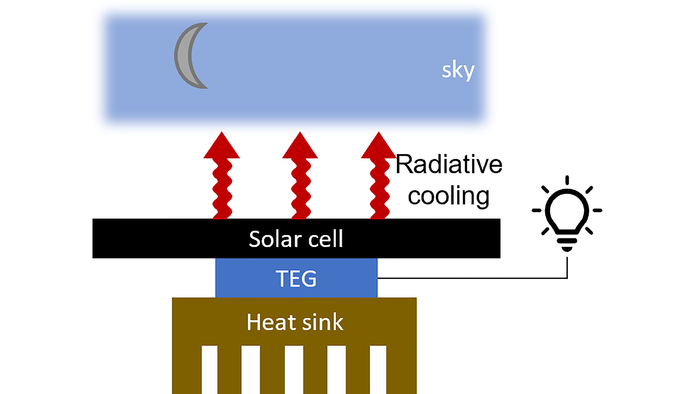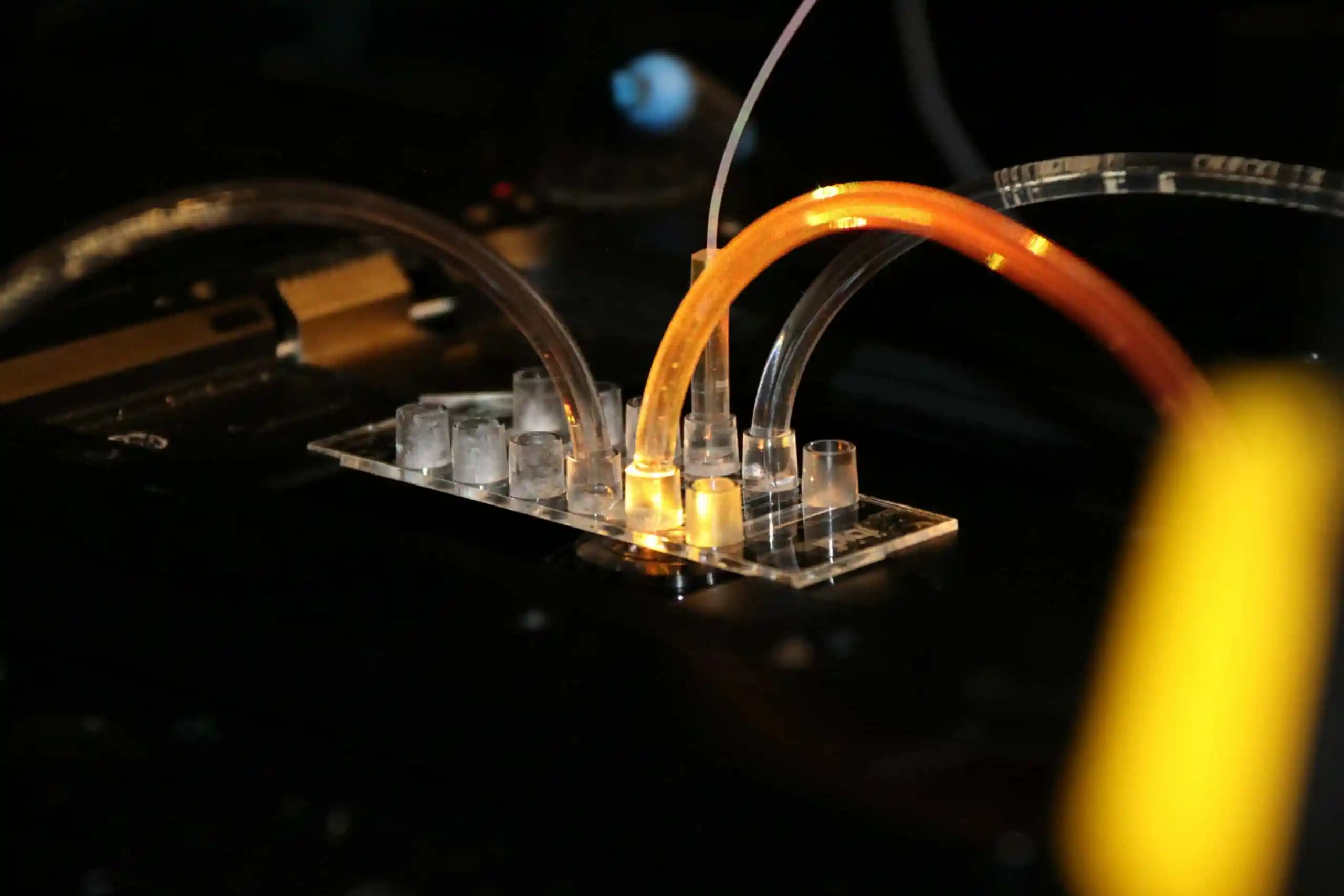
Photo by Mariana Ibanez on Unsplash
Honey might be a sweet solution for developing environmentally friendly components for neuromorphic computers, systems designed to mimic the neurons and synapses found in the human brain.
Hailed by some as the future of computing, neuromorphic systems are much faster and use much less power than traditional computers. Washington State University engineers have demonstrated one way to make them more organic too. In a study published in Journal of Physics D, the researchers show that honey can be used to make a memristor, a component similar to a transistor that can not only process but also store data in memory.
“This is a very small device with a simple structure, but it has very similar functionalities to a human neuron,” said Feng Zhao, associate professor of WSU’s School of Engineering and Computer Science and corresponding author on the study.“ This means if we can integrate millions or billions of these honey memristors together, then they can be made into a neuromorphic system that functions much like a human brain.”
For the study, Zhao and first author Brandon Sueoka, a WSU graduate student in Zhao’s lab, created memristors by processing honey into a solid form and sandwiching it between two metal electrodes, making a structure similar to a human synapse. They then tested the honey memristors’ ability to mimic the work of synapses with high switching on and off speeds of 100 and 500 nanoseconds respectively. The memristors also emulated the synapse functions known as spike-timing dependent plasticity and spike-rate dependent plasticity, which are responsible for learning processes in human brains and retaining new information in neurons.
The WSU engineers created the honey memristors on a micro-scale, so they are about the size of a human hair. The research team led by Zhao plans to develop them on a nanoscale, about 1/1000 of a human hair, and bundle many millions or even billions together to make a full neuromorphic computing system.
Currently, conventional computer systems are based on what’s called the von Neumann architecture. Named after its creator, this architecture involves an input, usually from a keyboard and mouse, and an output, such as the monitor. It also has a CPU, or central processing unit, and RAM, or memory storage. Transferring data through all these mechanisms from input to processing to memory to output takes a lot of power at least compared to the human brain, Zhao said. For instance, the Fugaku supercomputer uses upwards of 28 megawatts, roughly equivalent to 28 million watts, to run while the brain uses only around 10 to 20 watts.
The human brain has more than 100 billion neurons with more than 1,000 trillion synapses, or connections, among them. Each neuron can both process and store data, which makes the brain much more efficient than a traditional computer, and developers of neuromorphic computing systems aim to mimic that structure.
Several companies, including Intel and IBM, have released neuromorphic chips which have the equivalent of more than 100 million “neurons” per chip, but this is not yet near the number in the brain. Many developers are also still using the same nonrenewable and toxic materials that are currently used in conventional computer chips.
Many researchers, including Zhao’s team, are searching for biodegradable and renewable solutions for use in this promising new type of computing. Zhao is also leading investigations into using proteins and other sugars such as those found in Aloe vera leaves in this capacity, but he sees strong potential in honey.
“Honey does not spoil,” he said. “It has a very low moisture concentration, so bacteria cannot survive in it. This means these computer chips will be very stable and reliable for a very long time.”
The honey memristor chips developed at WSU should tolerate the lower levels of heat generated by neuromorphic systems which do not get as hot as traditional computers. The honey memristors will also cut down on electronic waste.
“When we want to dispose of devices using computer chips made of honey, we can easily dissolve them in water,” he said. “Because of these special properties, honey is very useful for creating renewable and biodegradable neuromorphic systems.”
This also means, Zhao cautioned, that just like conventional computers, users will still have to avoid spilling their coffee on them.
Original Article: Honey holds potential for making brain-like computer chips
More from: Washington State University
The Latest Updates from Bing News & Google News
Go deeper with Bing News on:
Honey memristors
- Can You Use Honey to Treat Acid Reflux?
Limited research suggests that honey may help, so if you have acid reflux, you might want to give it a try. Share on Pinterest If you’ve experienced a backflow of stomach acid into your ...
- Artificial Honey
Prof. Herzfeld, of Germany, recently brought out some interesting points regarding the manufacture of artificial honey in Europe. It is noticed that when we bring about the inversion of refined ...
- These birds help humans hunt for honey—but it’s not as sweet as you might think
These birds literally guide humans to sources of honey. Humans call to the birds for help, the birds recognize the request and start leading the way, and the humans follow them straight to a big ...
- Is honey better for you than sugar?
People often consider honey to be healthier than sugar, but it depends on the use. Like sugar, honey is high in carbs, can raise blood sugar levels, and is high in calories. Both honey and sugar ...
- What to Know About Manuka Honey for Psoriasis
Manuka honey may help reduce inflammation and provide relief from psoriasis symptoms. However, more research is needed to fully support its use as an at-home remedy. Psoriasis is an autoimmune ...
Go deeper with Google Headlines on:
Honey memristors
[google_news title=”” keyword=”honey memristors” num_posts=”5″ blurb_length=”0″ show_thumb=”left”]
Go deeper with Bing News on:
Neuromorphic computing
- BrainChip Adds Penn State to Roster of University AI Accelerators
BrainChip’s University AI Accelerator Program provides platforms and guidance to students at higher education institutions with AI engineering programs. Students participating in the program have ...
- SpiNNcloud Systems launches SpiNNaker2, the first commercial neuromorphic supercomputer
German neuromorphic supercomputing company SpiNNcloud Systems GmbH today announced the first commercially available neuromorphic supercomputer with the launch of its SpiNNaker2 pl ...
- BrainChip and Frontgrade Gaisler to Augment Space-Grade Microprocessors with AI Capabilities
BrainChip Holdings Ltd (ASX: BRN, OTCQX: BRCHF, ADR: BCHPY), the world’s first commercial producer of ultra-low power, fully digital, event-based, neuromorphic AI IP, and Frontgrade Gaisler, a leading ...
- 'Inspired by the human brain': Intel debuts neuromorphic system that aims to mimic grey matter with a clear aim — making the machine exponentially faster and much more power ...
Intel's Hala Point is the world's largest “brain-based” computing system with 1.15 billion artificial neurons.
- Scientists use salt, water to prove human brain-like computer can exist
The artificial synapse known as an iontronic memristor functions as a microchannel filled with a solution of water and salt.
Go deeper with Google Headlines on:
Neuromorphic computing
[google_news title=”” keyword=”neuromorphic computing” num_posts=”5″ blurb_length=”0″ show_thumb=”left”]










